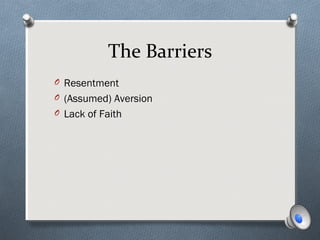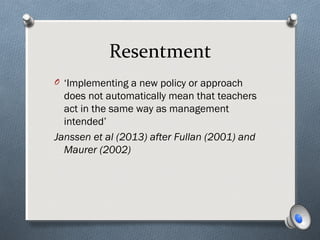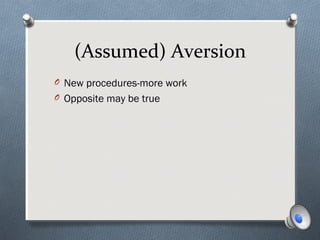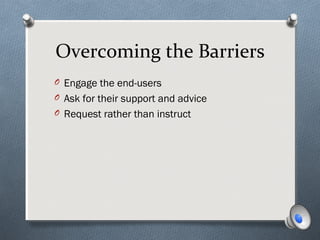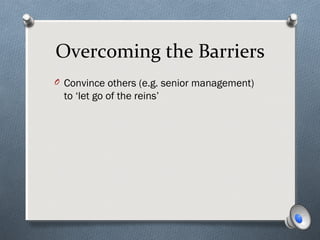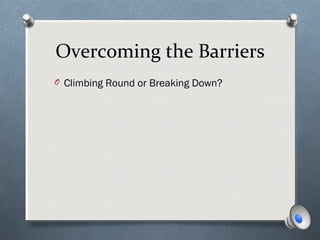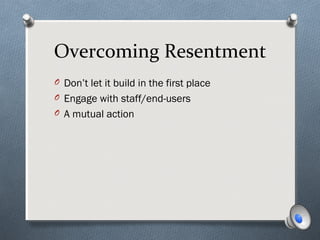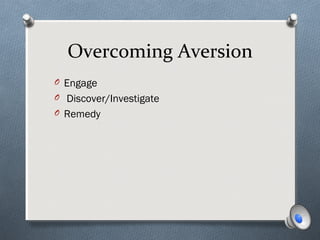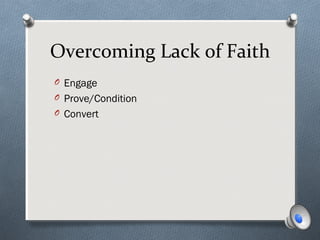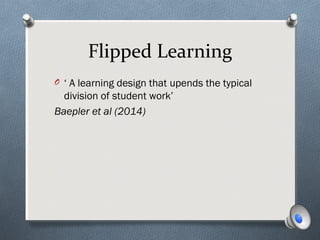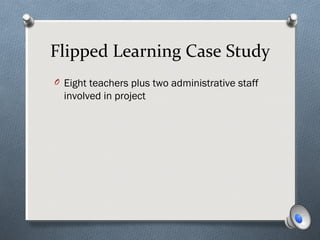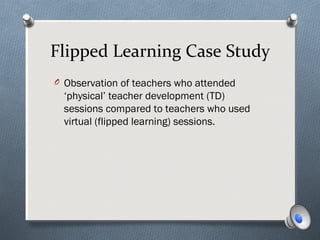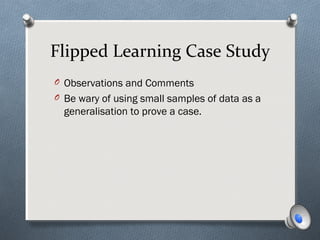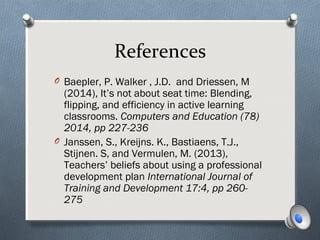H818 conference slides soundcheck
- 1. H818 Conference 2015 Overcoming the Barriers to Implementation through Using Flipped Learning Techniques in Teacher Development
- 2. H818 Conference 2015 O A case study by Steve Castle
- 3. The Barriers O Resentment O (Assumed) Aversion O Lack of Faith
- 4. Resentment O ‘Implementing a new policy or approach does not automatically mean that teachers act in the same way as management intended’ Janssen et al (2013) after Fullan (2001) and Maurer (2002)
- 5. (Assumed) Aversion O New procedures-more work O Opposite may be true
- 6. Lack of Faith O e.g. From previous experience
- 7. Overcoming the Barriers O Engage the end-users O Ask for their support and advice O Request rather than instruct
- 8. Overcoming the Barriers O Convince others (e.g. senior management) to ‘let go of the reins’
- 9. Overcoming the Barriers O Climbing Round or Breaking Down?
- 10. Overcoming Resentment O Don’t let it build in the first place O Engage with staff/end-users O A mutual action
- 11. Overcoming Aversion O Engage O Discover/Investigate O Remedy
- 12. Overcoming Lack of Faith O Engage O Prove/Condition O Convert
- 13. Flipped Learning O ‘ A learning design that upends the typical division of student work’ Baepler et al (2014)
- 14. Flipped Learning Case Study O Eight teachers plus two administrative staff involved in project
- 15. Flipped Learning Case Study O Observation of teachers who attended ‘physical’ teacher development (TD) sessions compared to teachers who used virtual (flipped learning) sessions.
- 16. Flipped Learning Case Study O Observations and Comments O Be wary of using small samples of data as a generalisation to prove a case.
- 17. References O Baepler, P. Walker , J.D. and Driessen, M (2014), It’s not about seat time: Blending, flipping, and efficiency in active learning classrooms. Computers and Education (78) 2014, pp 227-236 O Janssen, S., Kreijns. K., Bastiaens, T.J., Stijnen. S, and Vermulen, M. (2013), Teachers’ beliefs about using a professional development plan International Journal of Training and Development 17:4, pp 260- 275


